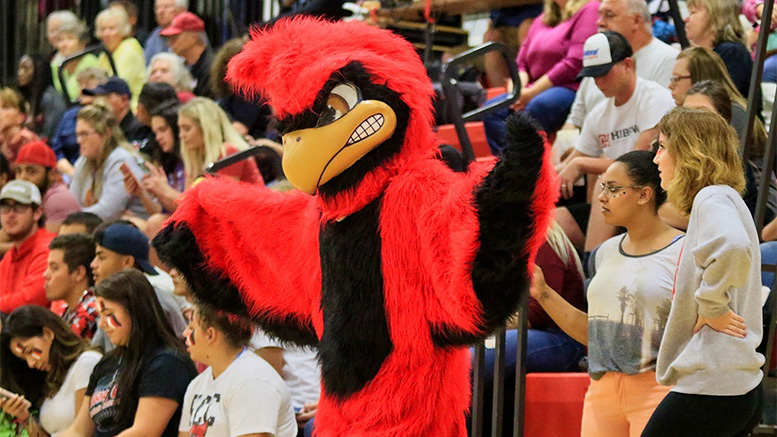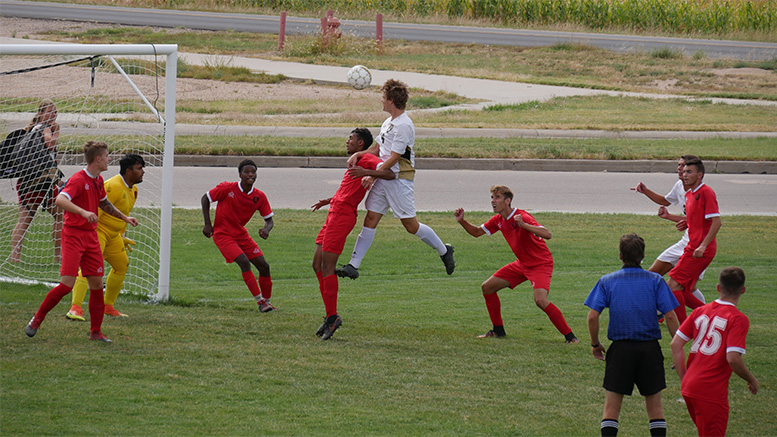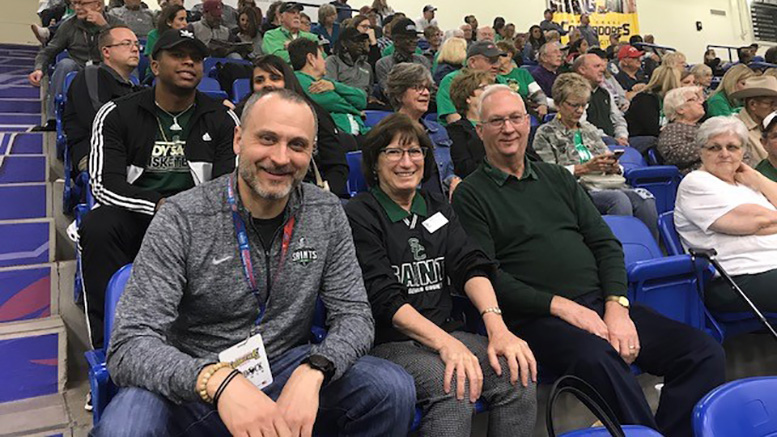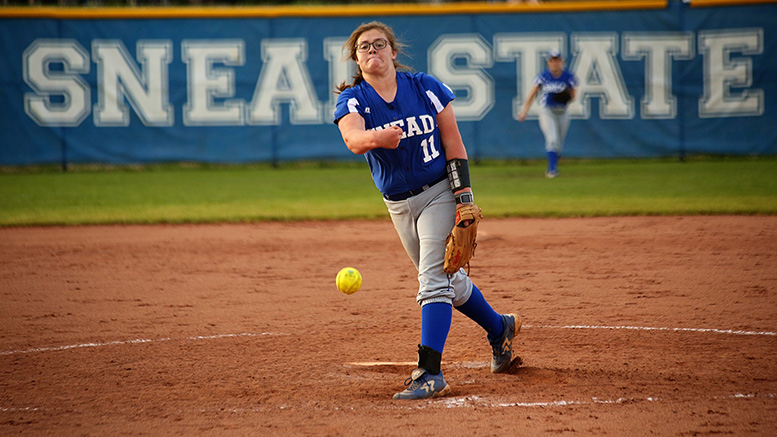They don’t play in nationally televised bowl games or championship tournaments that inspire betting pools in offices across America. But athletic teams at community colleges, especially those in rural areas, play a vital role in attracting a cohort of students, enhancing diversity geographically and otherwise, and helping to put the “community” in community college.
Senior administrators and athletic directors have challenges to overcome in terms of recruiting students, building the needed housing space for those coming from a distance and fundraising to be able to offer at least modest scholarship aid. Those at rural community colleges say these challenges are well worth overcoming.
This article comes from the August/September issue of AACC’s Community College Journal. Read the entire issue online.
“We may not have a Starbucks,” says Ken Trzaska, president of Seward County Community College (SCCC) in Liberal, Kansas, and a member of the American Association of Community Colleges’ (AACC) commission on communications and marketing. “But we need to stay on a competitive playing field by offering full scholarships and maintaining our level of success. We need to maintain a fine balance between athletics and academics, which is why students are ultimately here.”
A recruiting tool
Northeastern Junior College in Sterling, Colorado, has 188 student-athletes in 10 sports: men’s and women’s soccer, basketball golf and volleyball, and men’s wrestling, baseball and softball.
In addition to recruiting those 188 students, the athletic programs attract those dating athletes, as well as plain old friends, says Marci Henry, athletic director at Northeastern and president of the National Alliance of Two-Year College Athletic Administrators, an AACC affiliate council.
“That number also doesn’t include students who are not offered a scholarship but choose to come to our institution anyway,” she says. “Some will make the team, some won’t but will stick it out and try next year. Enrollment growth is one reason why a lot of rural colleges have athletics.”
SCCC supports seven athletic teams: men’s and women’s tennis and basketball, women’s volleyball, softball and baseball, Trzaska says. The college has explored bowling, golf and cross country and always looks at the startup costs and potential return on investment, leveraging a task force that includes community members, board members, the athletic director and Trzaska himself.
“We ask a question that’s hard to quantify: If we started bowling or soccer, would we entice students to enroll as a student-athlete who wouldn’t otherwise have enrolled?” he says. “Would a student have chosen us over a competitor if we had soccer? But maybe he also went (elsewhere) because they had a program of study we didn’t.”
Snead State Community College in Boaz, Alabama, offers eight athletic teams: men’s and women’s golf and basketball, women’s tennis, women’s volleyball, baseball and softball.
“They give us the ability to provide access to education for a number of students,” President Robert Exley says. “It generates an additional amount of revenue — most students who don’t make it to, quote, ‘the varsity’ stay and graduate. Out of 2,200 students, if we eliminated all athletics, I wouldn’t be surprised if we were down 500 students.”

Sports programs and their coaches are key recruiting tools at Hibbing Community College in Minnesota. (Photo: HCC)
Hibbing Community College in Hibbing, Minnesota, offers women’s volleyball, men’s and women’s basketball, softball and baseball, as well as trap-shooting as a non-sanctioned conference sport; the school dropped its golf team due to lack of interest, Provost Michael Raich says.
Out of about 930 full-time equivalent students, about 80 to 90 are athletes. “It certainly drives enrollment,” he says. “Some of those students might be there anyway, but not many. The majority of students we do get (who join teams) come here because they want to participate in athletics. They’re leapfrogging other campuses to come here to play sports.”
Promoting diversity
In addition to general enrollment growth, sports programs bring diversity to rural colleges, not only racial and ethnic variety but also geographic, Northeastern’s Henry says.
“Out here in rural northeastern Colorado, there isn’t a whole lot of diversity,” she says. “That obviously allows students to learn from each other, and about different cultures and different heritages.”

Sports programs bring diversity to rural colleges such as Northeastern Junior College in Colorado. (Photo: NJC)
With a majority Hispanic population, SCCC has been examining how athletic programs can help align the school with its demographics, Trzaska says. For example, “soccer is expensive,” he says. “But are players from our high schools going to other (colleges as a result)? Is that a way the college can create a bridge?”
Hibbing Community College sees sports as an opportunity to further diversity of all stripes, Raich says.
“We’re a typical rural community. We’re very homogeneous,” he says. “To bring in some diversity to our campus, not only cultural or racial but geographic, adds a vibrancy to our campus. We get students from Minnesota, students from neighboring states and other parts of the country. We’ve had limited (numbers of) international students. … It’s a good thing for our campus and our community to bring in the diversity. That helps everybody learn about different cultures.”
Creating community
Athletic programs engage students, providing a common activity and a common purpose, Henry says.
“It helps create that sense of community we have here on campus,” with mascots Plainsman Pete and Plainswoman Penny, he says. “Students will wear the colors and get excited about coming to a game. The more we can engage students in their surroundings, the more we’re going to retain them.”
Trzaska sees a similar dynamic at work at SCCC, where the women’s basketball team has finished fifth and fourth in the country the past couple of years.
“In a very direct way, particularly in rural communities, the athletic program becomes part of your identity,” he says. “We have the highest attendance in women’s basketball in the conference. There’s such a strong following for all of our sports. In small town America, it’s something positive to do. … We have quite the crowds that come to volleyball, baseball, basketball.”

Athletic programs engage students by providing a common activity and a common purpose, says Ken Trzaska (left), president of Seward County Community College in Kansas. (Photo: SCCC)
Games at Snead State provide an opportunity not only for the athletes to take the stage but also other campus performers — the jazz band and cheerleaders entertain the crowds at basketball games, for example, Exley says. “It generates student engagement, which we know is critical to student success,” he says.
When the men’s basketball team made the national tournament for the first time in 28 years, “you would have thought we were going to the Olympics, with the community sendoff,” he adds.
“It brings a collegiate feel,” Raich adds. “It’s a reason to wear the school colors and have a mascot. People connect that to college.”

